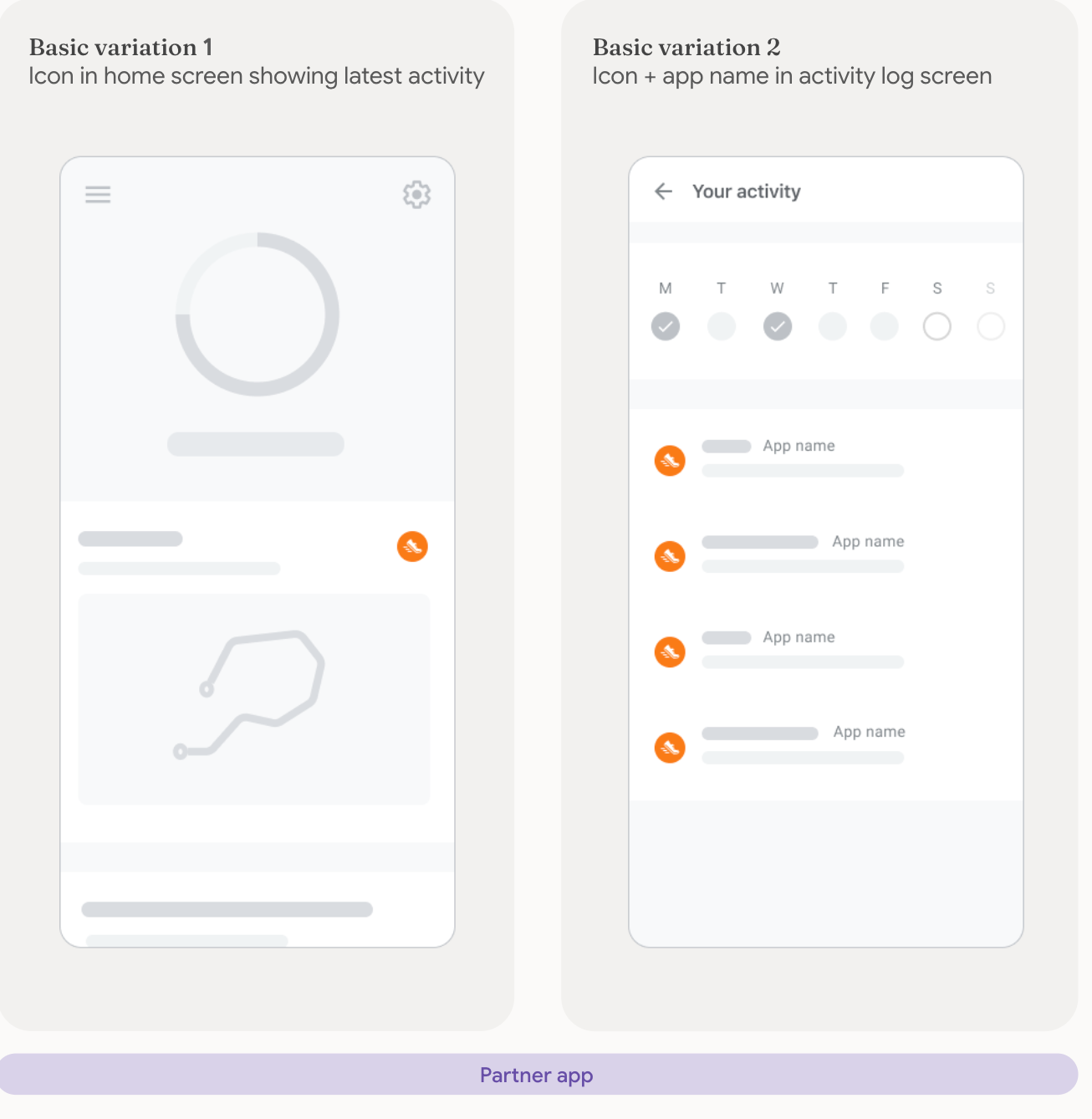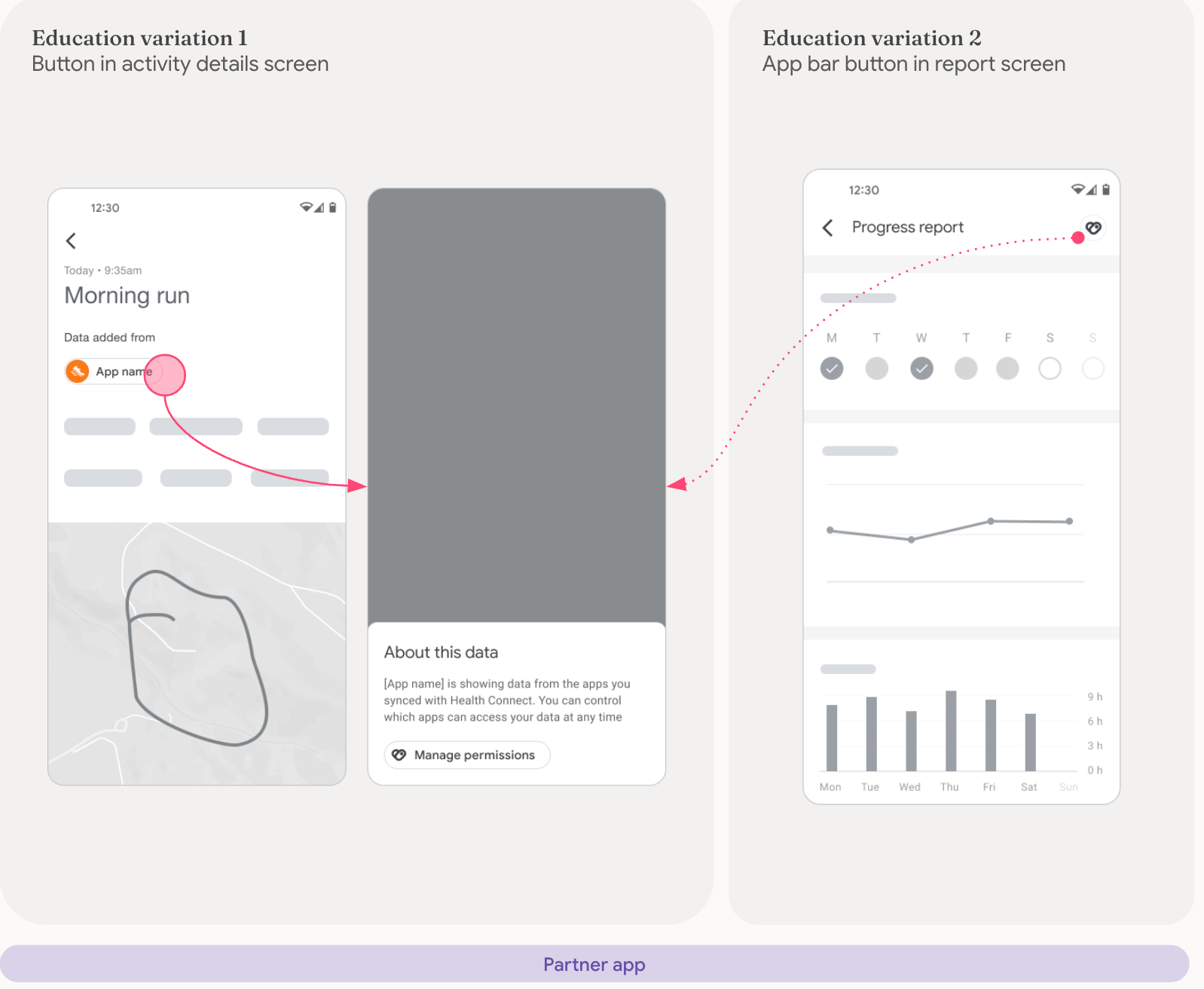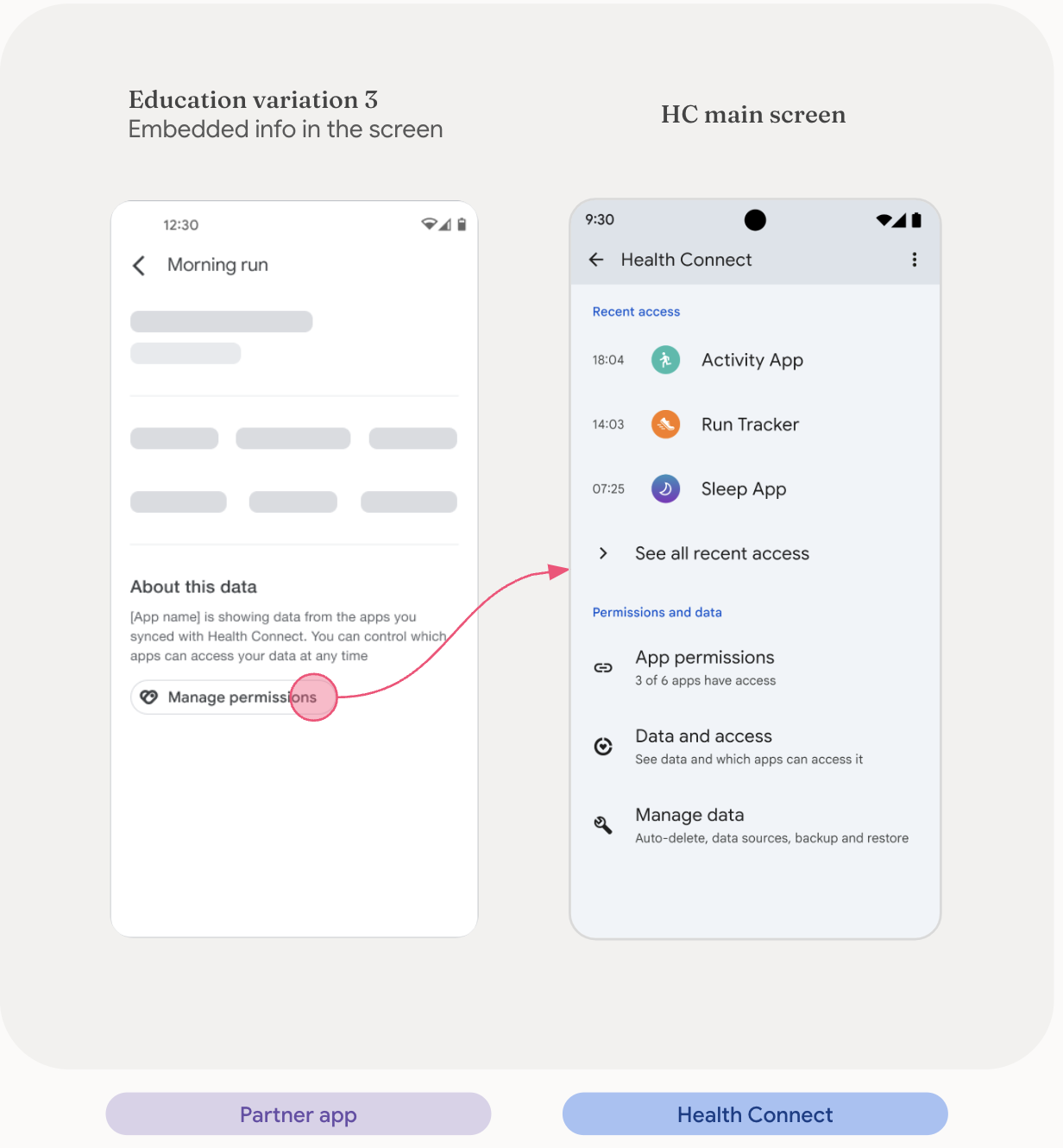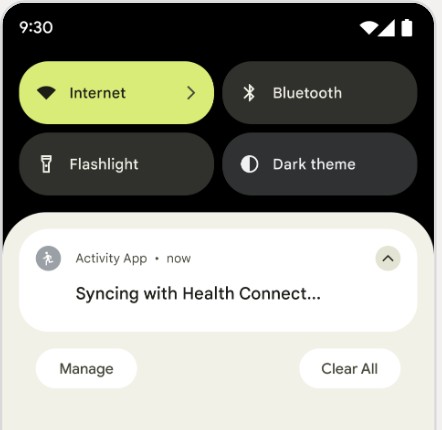To assure users that their data is being read correctly, clearly show how your
app obtains data, which comes from the
packageName property of the DataOrigin class.
There are two ways to achieve this:
Basic attribution
At a minimum, your user interface (UI) should display the app source icon and name (or only the app name if the icon can't be shown). Basic attribution is suitable for the following screens: Home, Activity log, and Activity details.
To support proper attribution, your application can display the name and icon of the application that originally recorded the data. This improves user trust and provides clarity about where health information originated.
You don't need to request any sensitive permission, such as
QUERY_ALL_PACKAGES, in order to retrieve this information. The following
example demonstrates how to retrieve the app label and icon for a given package
from the PackageManager:
fun getAppLabelAndIcon(context: Context, packageName: String): Pair<CharSequence?, Drawable?>{
return try {
val pm = context.packageManager
val appInfo = pm.getApplicationInfo(packageName, 0)
val label = pm.getApplicationLabel(appInfo)
val icon = pm.getApplicationIcon(appInfo)
label to icon
} catch (e: PackageManager.NameNotFoundException){
null to null
}
}
This utility helps verify proper attribution by displaying both the app name and icon alongside the data. See the implementation in the HealthConnectManager.kt sample.

Attribution with education
Your app should help users obtain information about where data originates from, with a direct link to the "App permissions" screen in Health Connect. This type of attribution is suitable for the following screens: Activity details, Reports and insights.




Data Sync
If there's enough latency when syncing your app with Health Connect, show this notification in your app during sync. This informs the user that the process may take a while to finish. If you use notifications for syncing, they should be set to a low priority by default.

